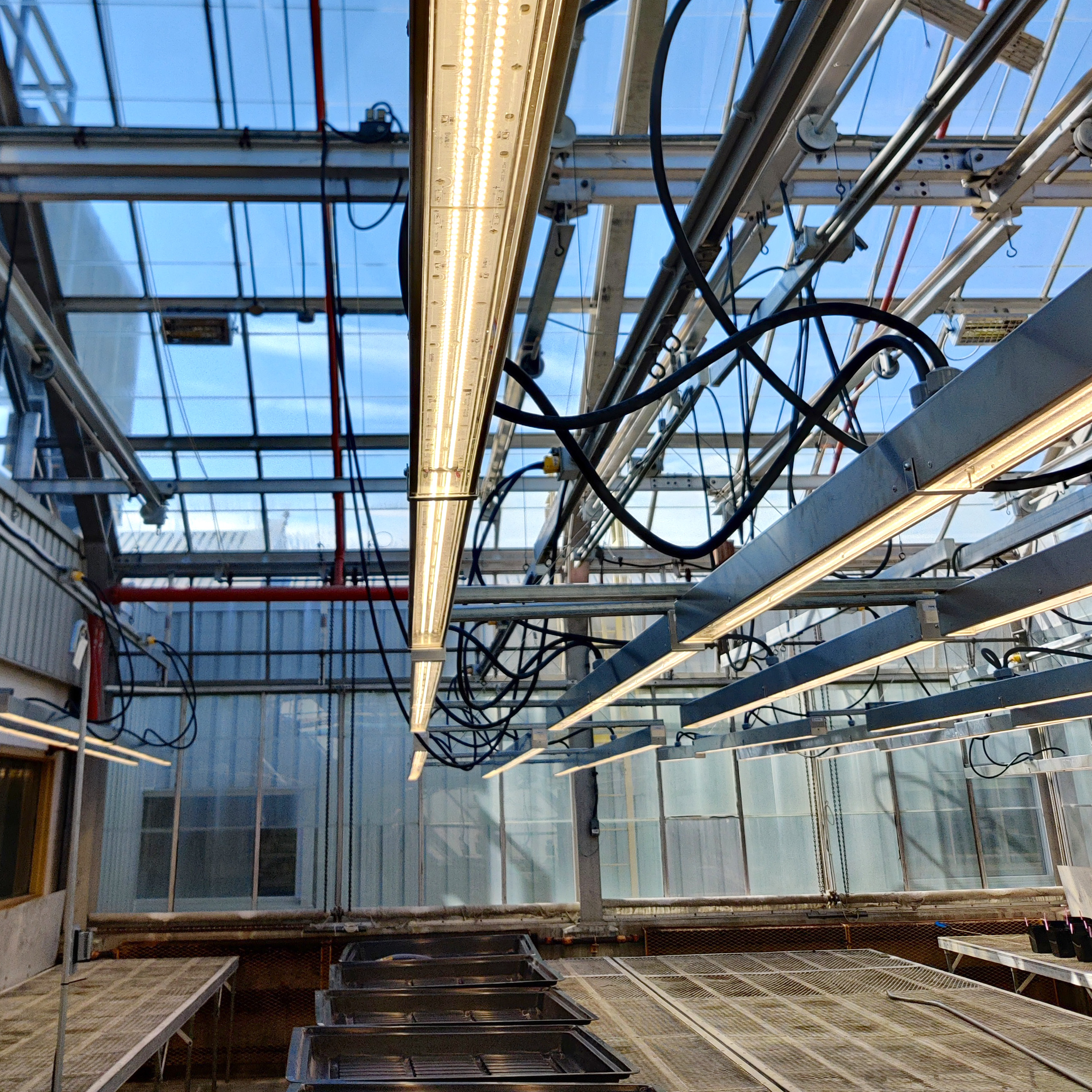Greenhouse + Growth Chamber Lighting LED Replacement

2021 | Agriculture/Forestry Centre, Centennial Centre for Interdisciplinary Science, Biological Sciences
The lighting in the growth chambers, a controlled environment used to grow plants, was replaced with LED lighting. LED lighting is beneficial in these chambers as they improve light quality and temperature controls for the plants, while reducing the need to replace bulbs and energy used.
Environmental Impact
- Using LEDs in a greenhouse significantly reduces the heat generated from the lighting which reduces the amount of cooling required within the chambers.
- An added benefit of the LEDs in growth chambers is improved colour rendering. Colour rendering is the ability of a light source to accurately display the colours of the objects. This results in improved lighting levels for both researchers as well as the plants resulting in enhanced growing conditions.
- The reduced number of fixtures required in the greenhouse allows more natural light in as the previous lighting set up partially blocked the sunlight.
- The addition of LEDs also allows for better dimming capabilities which has had a positive impact on the researchers allowing them to work more comfortably thereby enhancing their ability to work.
Innovation & Technology
- Plants utilize different wavelengths of light to promote vegetative growth and flowering. LED bulbs are used to stimulate the growth of plants as they are capable of producing controllable wavelengths for photosynthesis, especially when compared to other bulbs which are typically used for plant cultivation.
Estimated Savings
- LEDs are at least 75% more energy efficient than incandescent bulbs resulting in cost savings associate with electricity over the lifetime of each bulb. Additionally, LEDs can last up to 10-15 years meaning maintenance costs are lowered as bulbs do not need replacing as often.
- Based on the pilot models, the annual savings for Centennial Centre for Interdisciplinary Science are 155,391 kWh per year.
- Based on the pilot models, the savings for Biological Sciences are 7,379 kWh per year.
- Based on the pilot models, the savings for Agriculture/Forestry Centre are 11,676 kWh per year.